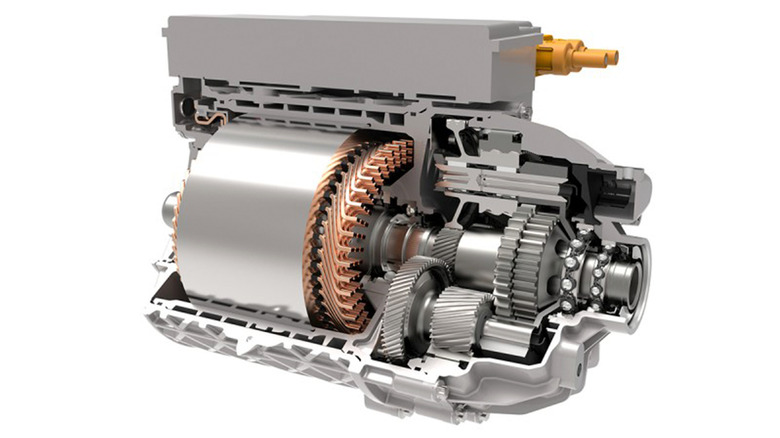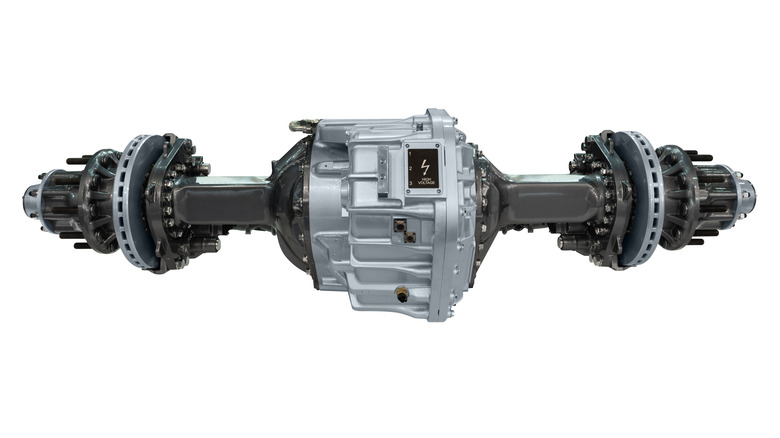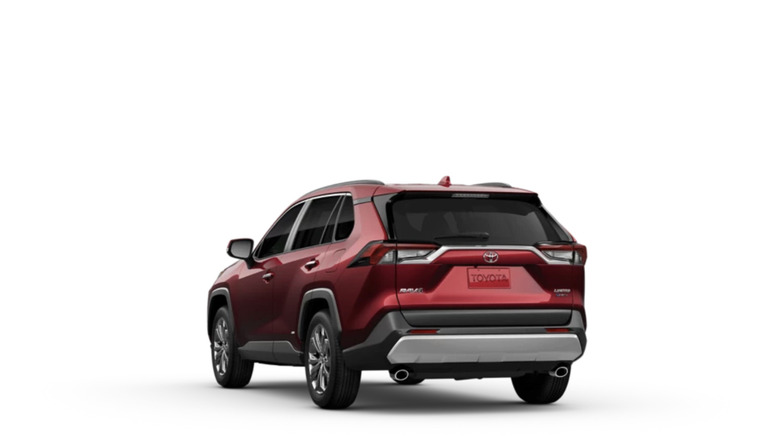What Is An Electrified Axle And How Does It Convert Regular Trucks Into Hybrids?
maximizing fuel economy has ben a priority for automakers and drivers since the oil crisis of the early 1970s, and the innovation that has arisen from the sector is quite impressive. One solution has been the use of electrified axles, or e-axles.These assemblies have motors and controllers that can work alone or in combination with an internal combustion engine (ICE) to provide some emissions-free propulsion. E-axles can be installed on a vehicle at the factory or later added (along with batteries) to turn a gas-powered car or truck into a hybrid.
There are five main elements that make up a vehicle's powertrain. The engine produces kinetic energy and sends rotational force to the transmission and in turn the driveshaft, differential, and axles. All of these components work together to convert energy, transfer it to the wheels, and make the vehicle move.
A hybrid vehicle uses two modes of propulsion in combination; in most cases that means a fuel-burning engine plus one or more electric motors. By this definition, any ICE truck with an e-axle installed would be classified as a hybrid vehicle. Hybrids offer better fuel economy than ICE-only vehicles thanks to these electric motors, and mild hybrids differ from plug-in hybrids primarily in the way their batteries are charged. Mild hybrids often charge batteries using regenerative braking or kinetic energy from the fossil fuel engine, while plug-in hybrid electric vehicles (PHEVs) are charged via land-based power and hefty inverters.
What are the advantages of e-axles?
Truck owners have plenty of reasons to install an e-axle on their vehicle beyond better fuel economy. The electric motors attached to an e-axle help provide instant torque, meaning a truck with an e-axle can usually accelerate quicker than an ICE-only one. That instant torque is also important when using your truck for towing, as it's helpful in moving that extra weight from a standstill. Vehicles with e-axles often make use of regenerative braking, which maximizes their efficiency by using the energy created during braking to help charge the e-axle batteries. They can provide as much as 93% energy efficiency, meaning just 7% of the energy produced goes somewhere other than to the road.
The instantly available torque from an e-axle also helps when off-roading, providing the on-demand oomph needed to crest hills or conquer other obstacles. ICE-powered trucks need to get up to speed in order to produce peak levels of torque, while trucks with electric power (even partial electric power) always have some immediate get-up-and-go at their disposal.
Issues with electronic axles
While e-axle systems provide a number of impressive benefits to trucks and truck owners, there are some limitations in implementing this technology. Cost is a big factor, with units that integrate a motor, gearbox, and axle assembly costing at least several thousand dollars. E-axle systems also rely on batteries, which are subject to heat-related degradation and can catch fire.
In addition, excessive heat generated in the e-axle assembly can break down vital lubricating oil. Despite these drawbacks, e-axles are becoming more common in passenger and commercial vehicles because they are efficient, compact, and can help reduce harmful greenhouse gas emissions. Lexus was experimenting with its own e-axle system as early as 2019, and the Maxus eTerrron 9 uses two e-axles to produce 435 horsepower. Combining the power from an internal combustion engine with e-axles isn't the only way to make a hybrid vehicle, though. The Honda two-motor hybrid system that debuted on the 2014 Accord used separate electric motors to move the car and charge the batteries and an Atkinson-cycle gasoline engine that performed both functions as well. The 2025 Toyota RAV4 Hybrid employs a 2.5-liter four-cylinder and three electric motors, one of which is in the rear axle. As ICE-powered vehicle bans are phased in for the U.S. and European Union markets over the next decade or so, expect to see carmakers embracing e-axles as a way to keep some models compliant.


